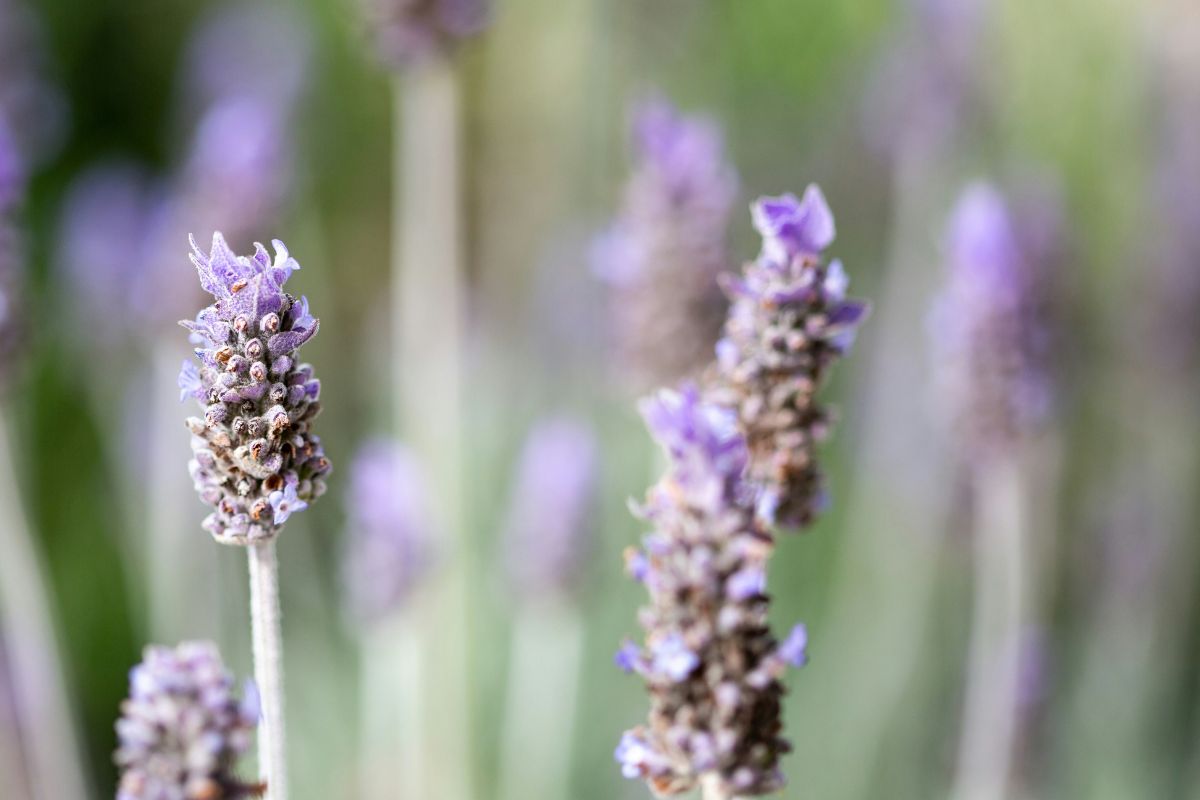Lavender Plant Benefits
The Lavender plant (Lavandula angustifolia) is beloved for its calming fragrance, vibrant purple flowers, and versatility in both indoor and outdoor settings. Native to the Mediterranean, this herbaceous plant is widely known for its soothing properties and aesthetic appeal. Whether you grow it for its pleasant aroma, culinary uses, or medicinal benefits, the Lavender plant is an excellent choice for enhancing any space.
Benefits of the Lavender Plant

1. Calming Fragrance
One of the most recognized benefits of Lavender is its delightful and calming fragrance. The plant’s aromatic oils are widely used in aromatherapy to promote relaxation, reduce stress, and improve sleep quality.
How it helps:
Lavender’s scent has been shown to reduce anxiety, ease tension, and create a peaceful atmosphere, making it perfect for bedrooms or relaxation spaces.
2. Air Purification
Like many other indoor plants, Lavender contributes to air quality improvement by absorbing carbon dioxide and releasing oxygen. Its strong scent also has a purifying effect, refreshing the air in your home.
How it works:
The plant’s oils can help neutralize odors and improve air circulation, creating a fresher, more inviting indoor environment.
3. Low Maintenance and Easy Care
Lavender is a hardy and low-maintenance plant, making it perfect for beginners or anyone with a busy schedule. It grows best in well-draining soil and needs little water once it is established.
Care Tip:
Lavender prefers full sunlight and dry conditions. Avoid overwatering to prevent root rot. It flourishes in bright, indirect light and can even tolerate direct sunlight in outdoor spaces.
5. Pest Repellent
Lavender is a natural pest repellent due to its strong fragrance. It helps keep unwanted insects like mosquitoes, flies, and moths at bay, making it an excellent addition to gardens, patios, or indoor areas.
How it works:
The scent of Lavender is unappealing to many insects, keeping them away from your living spaces.
How to Care for Your Lavender Plant
1. Light Requirements
Lavender requires a lot of sunlight to thrive. Preferably, it should get 6-8 hours of direct sunlight daily. Inadequate light can result in weak growth and fewer blooms.
Care Tip:
Place the Lavender plant near a south-facing window if grown indoors, or plant it in a sunny outdoor spot that receives plenty of direct sunlight.
2. Watering
Lavender is drought-tolerant and prefers soil that is allowed to dry out between waterings. One of the most frequent errors with this plant is overwatering, which can result in root rot.
Watering Tip:
Water the plant only when the top 1-2 inches of soil feel dry to the touch. Ensure the pot has good drainage if grown indoors.
3. Soil Requirements
Lavender thrives in well-draining, slightly alkaline soil. It does best in sandy or gravelly soil that doesn’t retain too much moisture.
Care Tip:
Use a potting mix designed for Mediterranean plants, or create your own mix by adding sand or perlite to regular potting soil to improve drainage.
4. Temperature and Humidity
Lavender prefers warmer temperatures and low humidity. It does well in temperatures between 60°F and 70°F (15°C to 21°C), and it can tolerate hot conditions when well-watered.
Care Tip:
Avoid placing the Lavender plant in areas with high humidity or drafts, as this can lead to mold growth or other issues.
5. Pruning and Maintenance
Regular pruning helps to maintain the shape and size of the Lavender plant. It also encourages fresh growth and more abundant flowering.
Pruning Tip:
Prune the plant in early spring or late summer to remove dead stems and promote new growth. Always trim the plant after it has bloomed to avoid cutting off new growth.
6. Harvesting and Using Lavender
Lavender flowers can be harvested for their fragrant oils or used in cooking. For the best aroma and flavor, harvest the flowers just as they begin to bloom, cutting the stems with sharp scissors.
Use Tip:
Lavender can be dried and stored in sachets or used in culinary dishes such as lavender lemonade, baked goods, and herbal teas.

Common Problems and Solutions
- Yellowing Leaves: This is usually an indication of overwatering or inadequate drainage.. Ensure the plant isn’t sitting in water and that the soil is drying out between waterings.
- Leggy Growth: Lavender that lacks sufficient sunlight may become leggy and sparse. Make sure the plant is getting enough direct sunlight.
- Pests: Lavender is generally pest-resistant but may occasionally attract aphids or spider mites. Treat infestations with insecticidal soap or neem oil.
Conclusion
The Lavender plant is an excellent choice for anyone looking to add a fragrant, low-maintenance, and therapeutic plant to their space. With its calming scent, air-purifying qualities, and versatility, Lavender is a perfect addition to your home, garden, or office. Whether you’re using it for its beauty, fragrance, or medicinal properties, Lavender will provide lasting benefits and enhance the atmosphere of your space.

